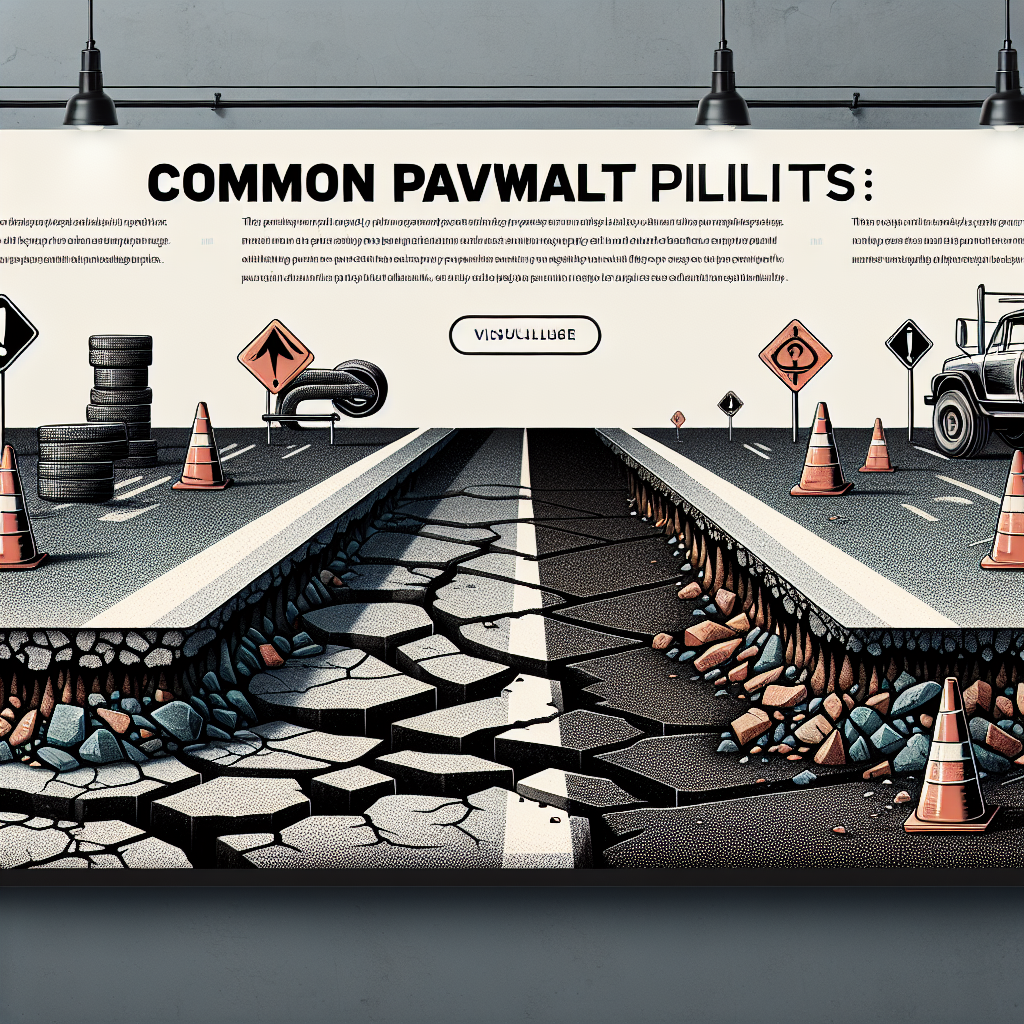When it comes to paving surfaces — whether it’s your driveway, a walking path, or a parking lot — the durability and longevity of your pavement depend on various factors. Unfortunately, many property owners unwittingly make mistakes that can lead to premature failure, costly repairs, and significant inconveniences. In this comprehensive guide, we’ll delve into common pavement pitfalls, providing you with the knowledge needed to ensure your pavement stands the test of time.
Understanding the Importance of Quality Pavement
Before we dive into the pitfalls, it’s essential to understand why durable pavement matters. Quality pavement not only enhances your property’s aesthetics but also significantly impacts its durability, safety, and overall value. Poorly constructed or maintained surfaces can lead to cracking, potholes, and uneven surfaces, which may pose safety hazards and decrease the property’s curb appeal.
Mistake #1: Skipping Proper Site Preparation
Why Site Preparation Matters
One of the most common mistakes property owners make is neglecting the site preparation phase. Proper site preparation is crucial for establishing a solid foundation for your pavement.
How to Avoid This Pitfall
- Conduct a Site Assessment: Analyze soil conditions and drainage patterns. Proper drainage is critical to prevent water pooling and damage.
- Excavate Adequately: Remove organic matter and any soft or loose soil to create a stable base.
- Grade the Area: Ensure the surface is graded correctly to facilitate water runoff and prevent erosion.
Mistake #2: Choosing the Wrong Materials
The Impact of Material Selection
The materials you choose for your pavement play a significant role in its longevity. Using inferior quality materials often leads to premature wear and increased maintenance costs.
Material Selection Tips
- Opt for Quality Over Cost: While budget constraints are important, investing in high-quality materials can save you money in the long run.
- Understand Your Options: Familiarize yourself with different types of pavement materials, such as asphalt, concrete, or pavers, and choose the one best suited for your climate and usage.
- Research Local Suppliers: Always source materials from reputable local suppliers to ensure quality and support your community.
Mistake #3: Ignoring Climate Considerations
Climate’s Role in Pavement Durability
Weather conditions can significantly influence the performance of your pavement. Failing to account for local climate can lead to premature wear and tear.
Tips for Adapting to Climate
- Consider Temperature Fluctuations: If you live in an area with extreme temperature changes, choose materials and methods that can handle expansion and contraction.
- Implement Proper Drainage Solutions: Ensure that drainage systems can handle heavy rains or snowmelt to prevent flooding and freezing damage.
- Plan for Seasonal Maintenance: Undertake seasonal maintenance tasks, such as sealing cracks and applying protective coatings, to prolong the life of your pavement.
Mistake #4: Poor Installation Practices
Understanding Installation Quality
Even the best materials will fail without proper installation. Poor installation practices can lead to uneven surfaces, inadequate compaction, and ultimately costly repairs.
Avoiding Installation Mistakes
- Hire Experienced Professionals: Don’t skimp on hiring a qualified paving contractor. Their expertise will ensure the job is done right the first time.
- Follow Manufacturer Guidelines: Adhere to specific guidelines provided by material manufacturers for installation techniques and conditions.
- Monitor the Installation Process: Stay engaged during the installation to ensure that everything is completed as planned.
Mistake #5: Neglecting Regular Maintenance
The Importance of Maintenance
Once your pavement is installed, the work isn’t over. Regular maintenance is crucial for extending the life of your pavement and keeping it looking good.
Maintenance Best Practices
- Conduct Routine Inspections: Regularly check for cracks, holes, or other signs of wear and address them promptly.
- Seal Coating: Applying a seal coat every few years can protect your pavement from moisture and UV damage.
- Keep It Clean: Regularly remove debris, leaves, and oil stains, as these can speed up deterioration.
Conclusion: Your Path to Lasting Pavement
By avoiding these common pavement pitfalls, you can ensure a durable, long-lasting surface that enhances your property and serves its purpose effectively. Remember, investing time and resources into proper preparation, material selection, skilled installation, and regular maintenance is essential. Your pavement deserves it, and so do you. Making informed decisions will not only save you money but also provide peace of mind, knowing your investment is protected.
Start today by assessing your pavement needs and avoid the traps that lead to wear and tear. You, your family, your guests, or your clients will appreciate a well-maintained surface for years to come.


